Discover the 6 Most Colorful Snakes
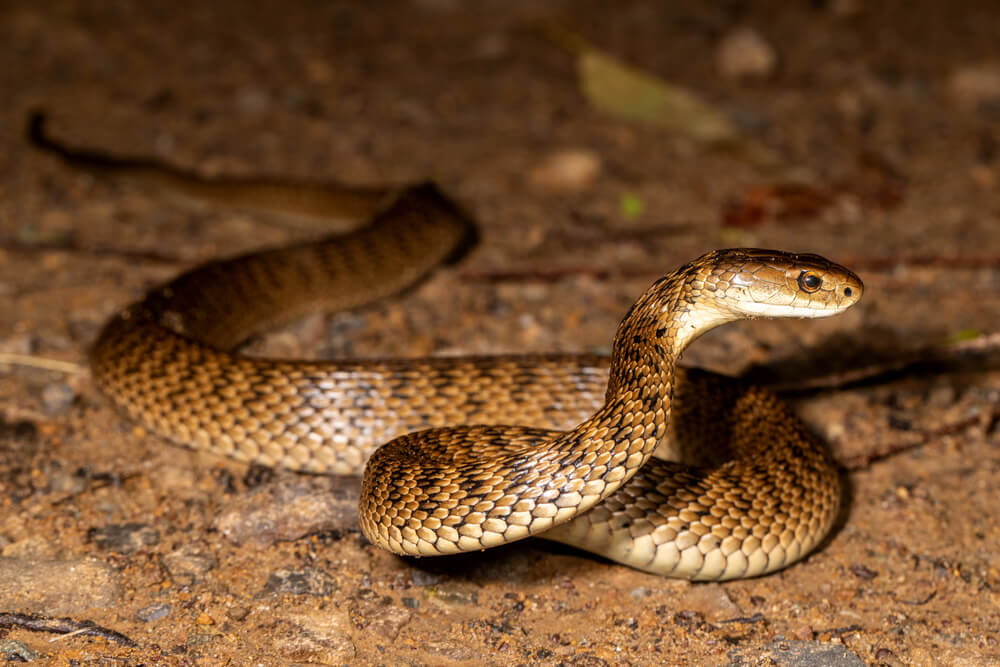
It’s true that most of us prefer not to have any contact with snakes. But, believe it or not, some of the most colorful snakes in the world are harmless! Learn all about them in this article.
The most colorful snakes in existence
Within the world of reptiles in general, and of snakes in particular, many specimens and species attract attention because of their bright colors. Their coloration makes them seem more dangerous to predators and helps them blend in with the environment they live in. Here are some very interesting examples of the most colorful snakes around:
1. Chrysopelea Paradisi
This species of tree snake, which appears in this article’s cover photo, is native to Southeast Asia. It has the ability to spin in the air and even glide to pass from one branch to another. To do this, it uses a very interesting mechanism. It unfolds its ribs and flattens its body to make itself wider, up to twice its size, thus taking better advantage of the air.
2. Ahaetulla fronticincta
This snake lives in Asia, specifically in Burma and the southern Himalayan forests. It’s conspicuous thanks to its green color with black and white marks and because its head has the shape of a triangle or arrow.
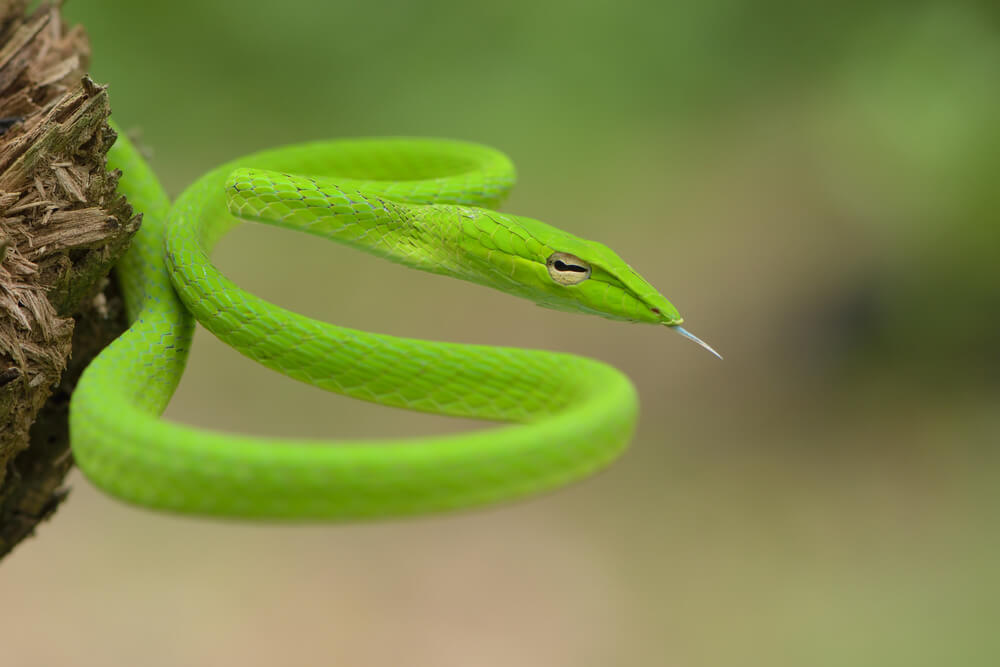
The Ahaetulla fronticincta feeds on fish thanks to an infallible hunting method. It twists its body on a branch near the water and places its head on the surface. It can go for hours without moving until prey approaches; at that moment, the snake attacks it by injecting it with poison and leaving it motionless.
3. Lampropeltis triangulum
This reptile, known as the milk snake, inhabits almost the entire American continent, especially from southern Canada to Venezuela, Colombia and Ecuador. It’s very common in Central America, Mexico, and the United States.
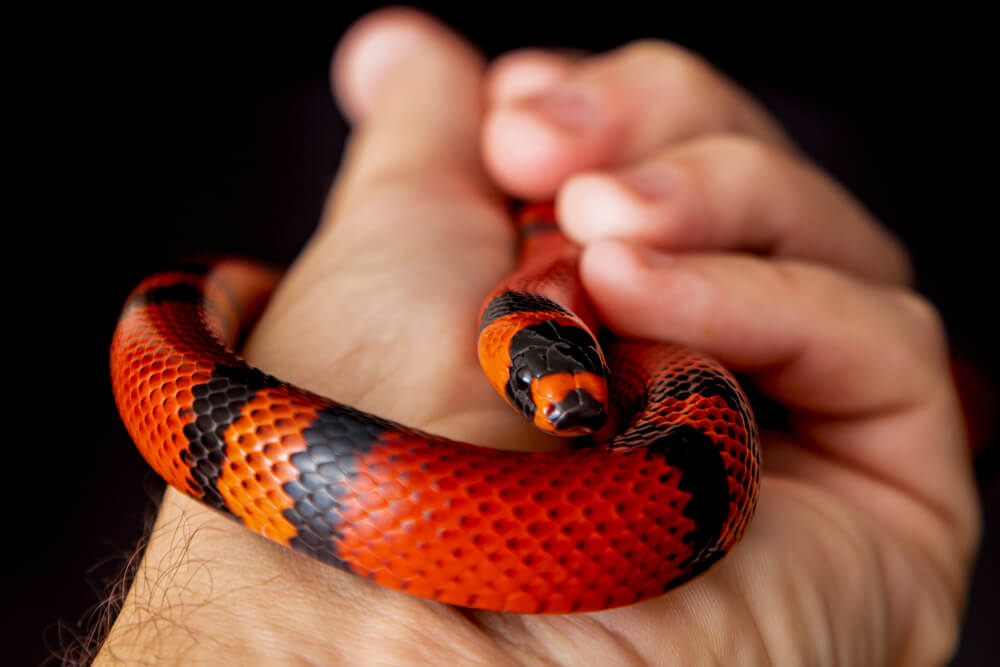
So far, more than 20 subspecies are known and their main distinctive feature is the color of their skin: red with black transversal lines and yellow stripes. This snake feeds on mice.
4. Atheris hispida
This isn’t only one of the most colorful snakes, but also one of the strangest, since its body is covered in scales that give it a ‘bristly’ and, of course, threatening, appearance. This species is poisonous–deadly for people who don’t receive first aid–and endemic to Central Africa.
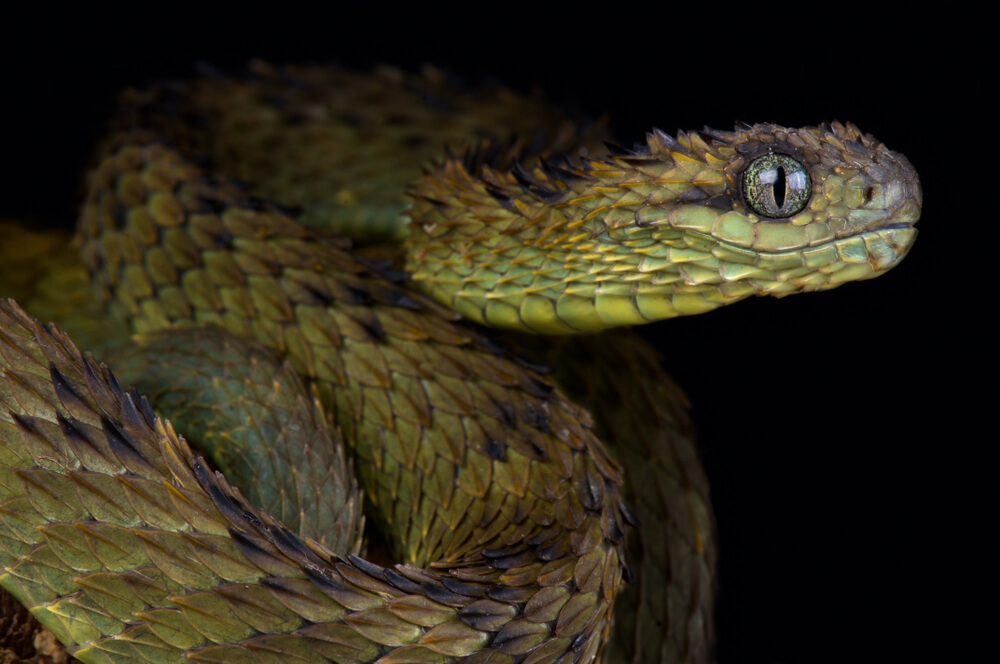
Males of the Atheris hispida species can reach about 29.5 inches in length (females up to 23.5 inches), and both sexes have large, rounded eyes, slit-like nostrils, and scales on the head and neck that are larger than those they have on their bodies.
This snake has the ability to climb branches, canes and stems, and during the day can be found sunbathing (it’s cold-blooded). However, it also has nocturnal habits. Its diet is composed of lizards, frogs, and small mammals.
5. Garter snake
The garnet snake, another of the most colorful snakes in the world, is harmless. It lives in areas near fresh water in Canada and the United States, and its family consists of more than 15 species.
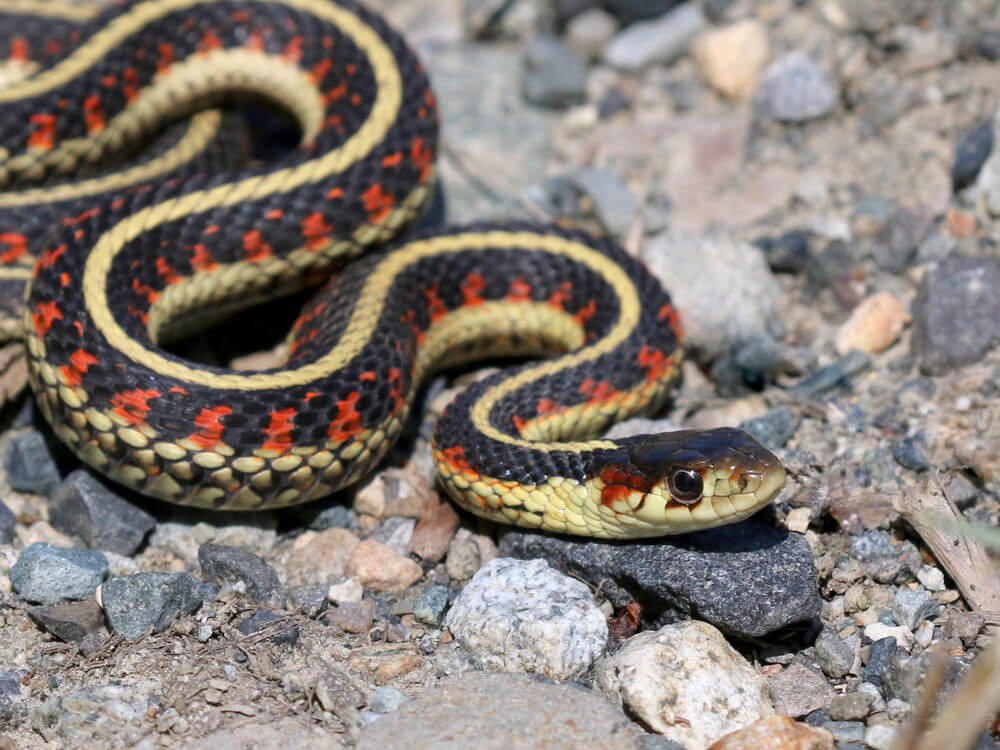
The main characteristic of this reptile is its coloring: red and turquoise. The ‘combinations’ between both tones can be different, but the truth is that it doesn’t go unnoticed anywhere. The head is always predominantly red.
6. Diadophis punctatus regalis
This is popularly known as the regal ringneck snake and is endemic to the deserts and mountains of the southern United States and northern Mexico. Although its most common color is gray, it has white, orange, yellow, red, or brown spots on the back of its body.
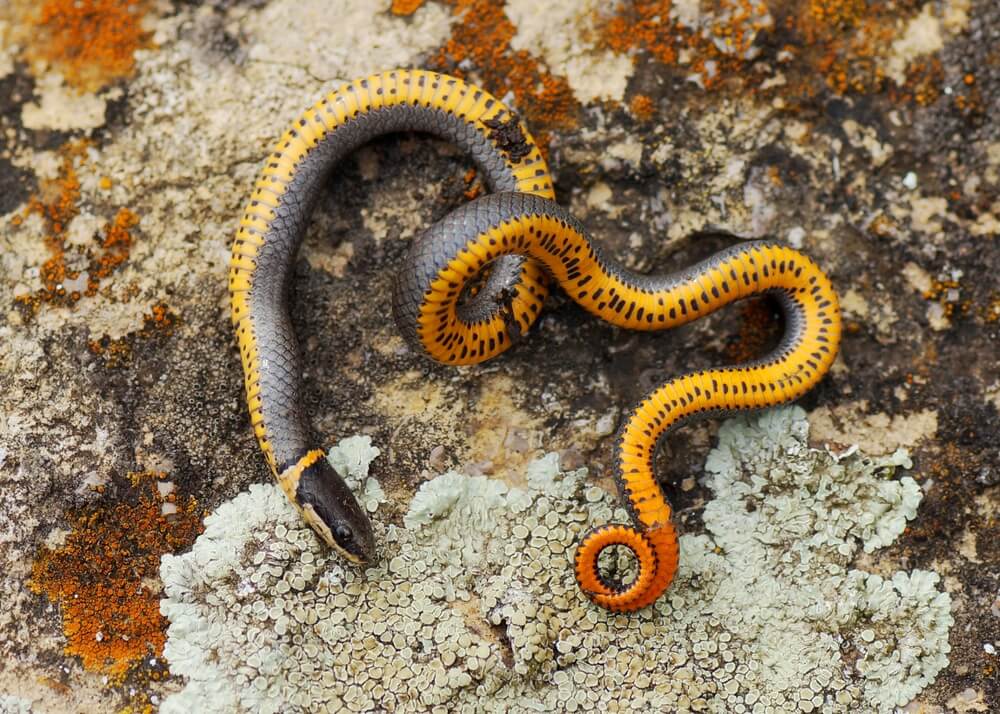
It feeds on small snakes such as earth snakes, blackhead snakes, and flathead snakes. It uses venom to immobilize its prey, which is harmless to people. Regarding nocturnal habits, this snake spends most of the day hidden among rocks or logs. When it feels threatened, it twists its tail as if it were a spring.